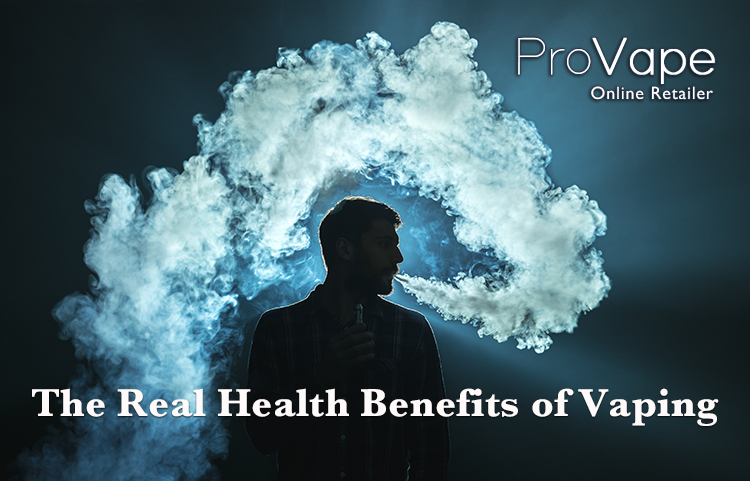Table of Contents
- 1 “Inhaling vapor can’t be good for you.”
- 1.1 “But what about the ultrafine aerosol droplets in the nicotine vapor?”
- 1.2 “Formaldehyde though. There’s ten times more formaldehyde in e-cigarettes than traditional cigarettes!”
- 1.3 “Okay, maybe it’s not so physically harmful, but it definitely acts as a gateway into the world of smoking for young people.”
The Health Benefits of Vaping – It’s time to set the record straight regarding the risks and benefits of vaping. When this subject is broached, you’re bound to hear an incredible spectrum of opinions ranging from utterly baseless allegations and fearmongering to well-meaning but ill-informed members of the Concerned Citizen Brigade. With vaping on the rise across nearly all demographics, this anti-vaping crusade is only going to become more pervasive. If you’re a vaper, like I am, it’s important to know the facts so you can effectively defend our hobby. Let’s start with one of the most basic misconceptions about vaping:
“Vaping is not a tool for smoking cessation.”
To put it simply, yes it absolutely is. The most comprehensive study of its kind showed, in 2014, that smokers using electronic cigarettes with nicotine were 60% more likely to succeed giving up cigarettes. Of those who couldn’t completely give up smoking, most were able to cut their cigarette consumption in half. In fact, nearly a third of all vapers are reported to be ex-smokers. Sure, while some of these people still use cigarettes, nearly all of them smoke at a dramatically reduced rate. So, the evidence is clear: vaping helps people quit smoking. Let’s move on.
“Inhaling vapor can’t be good for you.”
This argument usually gets trotted out pretty quickly after making the point that vaping is extremely effective at helping people give up cigarettes. “Sure,” people say, “but is inhaling vapor any better than sucking down smoke?”
Yeah. It is. Scientific studies regarding the chemistry of liquids and vapors show that vaping doesleave behind traces of contaminants and the heat creates potentially harmful compounds. However, the amount of trace contaminants are at least two orders of magnitude less than what you’d find in the lungs of a smoker and are extremely unlikely to pose any type of meaningful health concern. The most comprehensive study on the subject concluded assertively that, if we’re going by the same standards we use to judge workplace safety, there is “zero evidence that vaping produces inhalable exposures to contaminants… that would warrant health concerns” – BMC Public Health 2014.
“But what about the ultrafine aerosol droplets in the nicotine vapor?”
Nope. Those have nothing chemically in common with the composition of smoke nor do they have contain any measurable toxicity.
“Formaldehyde though. There’s ten times more formaldehyde in e-cigarettes than traditional cigarettes!”
This rumor can be traced back to a single dubious Japanese study which has been thoroughly debunked. Sure, there’s formaldehyde in nicotine vapor, but it’s closer to 25 times lower than the amount found in cigarettes – if it’s found at all! In fact, a lot of these studies run tests using “dry puff” conditions which are utterly meaningless as nobody vapes like that. Shockingly, under ordinary conditions, a lot of studies find zero formaldehyde (which, by the way, is readily present in just about every human environment anyway and not nearly the bogeyman we make it out to be).
“Okay, maybe it’s not so physically harmful, but it definitely acts as a gateway into the world of smoking for young people.”
There’s two main points to tackle here. Firstly, there is literally not a single shred of evidence to suggest that teens picking up e-cigarettes are likely to get into smoking traditional cigarettes. It’s simply not a thing that happens. Next, there’s the argument that vaping is targeting teenagers and young people which is getting them addicted at earlier ages than ever before. Again, this is nonsense. Studies have shown that the rise in vaping among teenagers closely matches up with its increased popularity across all demographics. Furthermore, the rise in vaping is concurrent with an equally dramatic decline in traditional smoking. Basically, the kids who were going to smoke cigarettes are now vaping instead. The kids who were never going to smoke aren’t vaping either.
Vaping almost exclusively appeals to smokers and ex-smokers; very few people begin using nicotine with e-cigarettes. Again, rigorous studies and testing bear this out. Of course, people are always going to say that the community is marketing to young people, but every single reputable website across the web, especially the more popular sites like Provape.com, feature rigorous age verification. Simply put, nobody is trying to get young people addicted to nicotine.
So there it is, guys. Across the board, the stuff you hear about the risks of vaping is baseless propaganda. There’s a bunch of good studies out there from which I pulled all this information, so do yourself a favor: read through some of the big studies, learn the talking points, and help defend our hobby. Don’t let people gaslight you with things like, “oh, well the science isn’t really in on vaping yet.” It sure is, folks, and the science is on our side.






